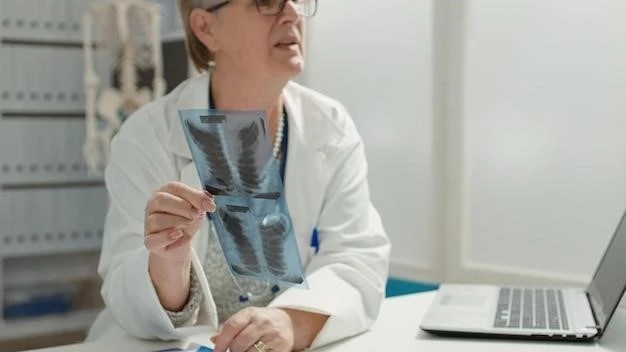Introduction to Tracheobronchopathia Osteoplastica
Tracheobronchopathia Osteochondroplastica (TO) is a non-malignant condition affecting the tracheobronchial tree‚ characterized by abnormal bone and cartilage growths.
Definition and Characteristics
Tracheobronchopathia osteoplastica (TO) is an uncommon condition characterized by the presence of submucosal nodules composed of bone and cartilage tissue within the tracheobronchial tree. These nodules can protrude into the airway lumen‚ potentially causing airway obstruction.

Prevalence and Epidemiology
Tracheobronchopathia osteoplastica (TO) is a rare condition of the large airways‚ with a prevalence estimated between 0.01 and 0.80. Recent studies suggest it may be underdiagnosed.
Global Occurrence
Tracheobronchopathia osteochondroplastica (TO) is a rare condition with a prevalence estimated between 0.01 and 0.80. Recent studies suggest it may be underdiagnosed‚ and the prevalence varies across different populations.
Recent Studies and Findings
Despite being a rare condition‚ recent studies have shed light on the prevalence of Tracheobronchopathia Osteoplastica‚ emphasizing the importance of accurate diagnosis and management strategies.
Clinical Presentation and Symptoms
Tracheobronchopathia osteochondroplastica (TO) can present with symptoms like chronic cough‚ hemoptysis‚ recurrent respiratory infections‚ and wheezing‚ although many cases are asymptomatic.
Common Symptoms
Common symptoms of tracheobronchopathia osteoplastica include chronic cough‚ hemoptysis (coughing up blood)‚ recurrent respiratory infections‚ and wheezing. While many individuals with this condition may be asymptomatic‚ those who do experience symptoms often present with these manifestations.
Differential Diagnosis
When diagnosing tracheobronchopathia osteoplastica‚ physicians may need to differentiate it from conditions such as tracheal tumors‚ tracheopathia chondroosteoplastica‚ tracheopathia osteoplastica‚ endobronchial tuberculosis‚ granulomatosis with polyangiitis (Wegener’s granulomatosis)‚ and sarcoidosis. The presence of submucosal nodules with bone and cartilage tissue composition is a key diagnostic feature that helps distinguish tracheobronchopathia osteoplastica from other similar conditions.

Diagnosis and Imaging
Diagnosing Tracheobronchopathia Osteoplastica usually involves imaging studies like chest CT scans and bronchoscopy to visualize the bone and cartilage nodules in the tracheobronchial area.
Diagnostic Techniques
Diagnosing tracheobronchopathia osteoplastica typically involves a combination of imaging techniques like chest CT scans‚ bronchoscopy‚ and histological examinations of biopsied tissue samples. Visualizing the unique bone and cartilage nodules in the tracheobronchial area is crucial for an accurate diagnosis.
Role of Bronchoscopy and Imaging Studies
Utilizing bronchoscopy and imaging studies like chest CT scans are essential in diagnosing Tracheobronchopathia Osteoplastica. These methods allow for the visualization of the bone and cartilage nodules within the tracheobronchial tree‚ aiding in accurate diagnosis and treatment planning.
Pathophysiology of Tracheobronchopathia Osteoplastica
Tracheobronchopathia osteoplastica (TO) is a rare condition characterized by abnormal chondrification and ossification of cartilages on the anterior and lateral walls of the tracheobronchial tree.
Etiology and Underlying Mechanisms
The etiology of Tracheobronchopathia osteoplastica is unknown‚ and the condition’s underlying mechanisms remain to be fully elucidated. It is characterized by submucosal nodules with or without calcifications composed of bone and cartilage tissue in the trachea and proximal bronchi.
Histological Features
Tracheobronchopathia osteoplastica (TO) is characterized by the presence of submucosal nodules in the tracheobronchial tree‚ composed of bone and cartilage tissue. The histological examination of these nodules is essential for confirming the diagnosis and understanding the tissue composition involved in this rare condition.
Treatment and Management Strategies
As tracheobronchopathia osteoplastica (TO) is a rare benign condition‚ treatment focuses on managing symptoms and complications‚ including airway management‚ addressing infections‚ and ensuring airway patency. Surgical interventions may be considered in severe cases to alleviate airway obstruction caused by the bone and cartilage nodules.
Medical Interventions
The management of Tracheobronchopathia Osteoplastica typically involves a multidisciplinary approach. Medical interventions may focus on addressing symptoms like cough and infections‚ optimizing airway clearance‚ and ensuring appropriate oxygenation. In some cases‚ bronchodilators and mucolytic agents may be utilized to alleviate symptoms associated with airway obstruction.
Surgical Approaches
In severe cases of Tracheobronchopathia Osteoplastica (TO)‚ surgical interventions may be necessary to address airway obstruction caused by the bone and cartilage nodules. Surgical approaches may include debulking procedures to remove the nodules and improve airway patency‚ tracheal stenting‚ or other airway reconstruction techniques depending on the extent of the disease.
Prognosis and Complications
Tracheobronchopathia osteoplastica has a benign course‚ but complications like airway obstruction may lead to severe respiratory issues. The long-term outlook varies depending on symptom severity and treatment response;
Long-Term Outlook
The long-term outlook for individuals with Tracheobronchopathia Osteoplastica varies depending on the severity of symptoms and the response to treatment. Complications like airway obstruction can impact the quality of life and respiratory function in the long run‚ necessitating ongoing monitoring and management to maintain optimal respiratory health.
Potential Complications
Potential complications of Tracheobronchopathia Osteoplastica include respiratory issues like chronic cough‚ recurrent infections‚ and airway obstruction due to the presence of bone and cartilage nodules in the tracheobronchial tree. Management strategies aim to address and mitigate these complications to prevent long-term respiratory compromise.
Research and Future Directions
Ongoing research on Tracheobronchopathia Osteoplastica focuses on understanding the disease’s underlying mechanisms‚ improving diagnostic techniques‚ and exploring novel treatment modalities to enhance patient outcomes and quality of life.
Ongoing Studies
Ongoing studies related to Tracheobronchopathia Osteoplastica focus on elucidating the disease’s etiology‚ refining diagnostic approaches‚ exploring potential genetic factors‚ and investigating novel therapeutic interventions to enhance patient care and outcomes.
Emerging Treatment Modalities
Emerging treatment modalities for Tracheobronchopathia Osteoplastica are currently under investigation‚ focusing on potential pharmacological agents to alleviate symptoms‚ advances in surgical techniques for improved airway management‚ and exploring targeted therapies for better outcomes in affected individuals.
